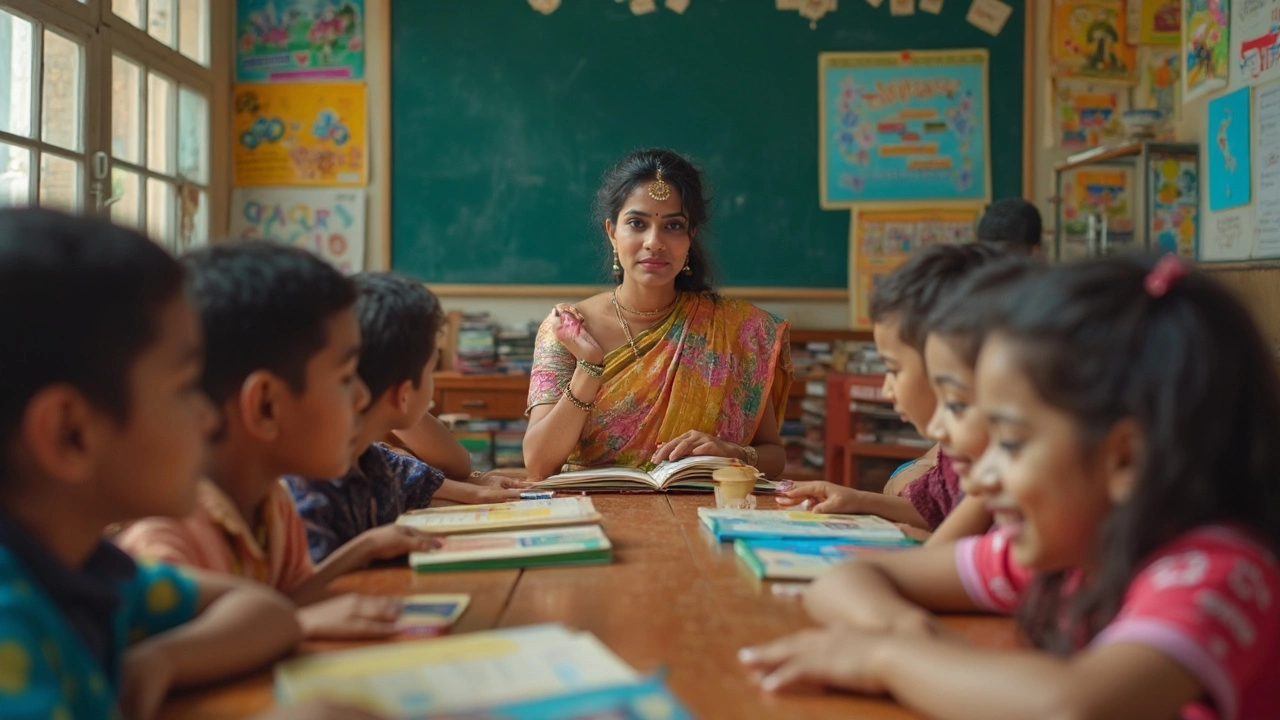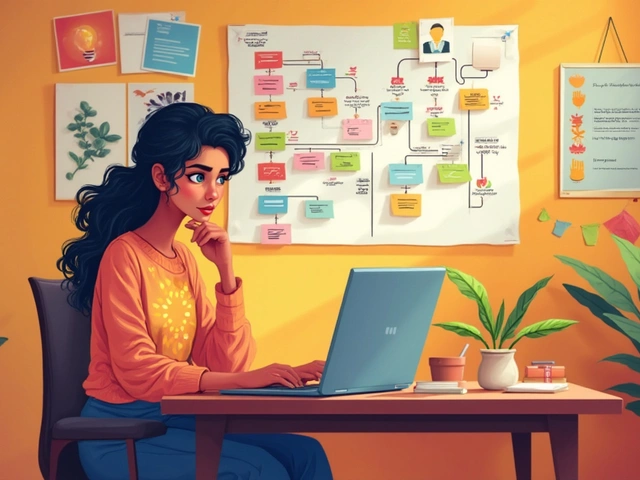The CBSE board in India stands as a giant in the educational landscape, shaping the future of millions of students each year. Curious about just how many students are under its umbrella? You're not alone! With each passing year, more families opt for CBSE, given its standardized curriculum and widespread recognition.
As of the latest data from 2024, over 20 million students are spread across thousands of CBSE-affiliated schools not only in India but also internationally. This number is staggering, reflecting the trust and reputation CBSE has built over decades.
Why is this important, you ask? Well, knowing these numbers isn't just about statistics—it's about understanding the education ecosystem that influences your kids' lives in countless ways. More students mean more resources, potentially influencing everything from textbook availability to classroom sizes.
- Overview of CBSE
- Current Student Statistics
- Regional Distribution
- Growth Over the Years
- Implications for Education
Overview of CBSE
The Central Board of Secondary Education (CBSE) is one of India's most respected educational boards, known for its extensive network and standard curriculum. Established in 1929, it's not just a board but a learning philosophy that emphasizes contemporary and practical education.
Foundation and Growth
Initially set up to ensure a consistent and holistic education across the nation, CBSE has grown massively since its inception. It began with a handful of schools but now has over 27,000 schools under its affiliation, not just in India but spread over 25 countries worldwide. This expansion highlights CBSE's impact on global education standards.
Curriculum Highlights
The CBSE curriculum follows a student-friendly approach, integrating practical knowledge with theoretical understanding. Subjects range from science and mathematics to humanities and commerce, aiming to provide comprehensive education. CBSE is known for its emphasis on skill-based learning, preparing students not only for higher studies but also for competitive exams like JEE and NEET.
Assessment Methods
CBSE has a unique assessment system focusing on both formative and summative evaluations. The Continuous and Comprehensive Evaluation (CCE) introduced by CBSE ensures that student assessment is an ongoing process, encouraging regular feedback and holistic development. This ensures students don't just memorize facts but truly understand and apply knowledge.
Increasing Popularity
CBSE continues to gain popularity due to its robust framework and flexibility, making it a preferred choice among parents. Schools affiliated with the board are well-prepared to guide students toward future academic success. Parents find CBSE's approach beneficial as it aligns well with standardized testing and further education.
Current Student Statistics
When it comes to the number of CBSE students today, we're talking massive figures that highlight its dominance in India's education space. As of 2024, over 20 million students are enrolled under the CBSE umbrella, spread over 22,000 schools worldwide. This isn’t just a local affair—CBSE has affiliations in several countries, creating a global learning environment for its students.
An interesting fact? These numbers highlight not just growth in count but also in the diversity of students accessing the board. CBSE continues to expand, incorporating newer pedagogies and tech advancements to cater to this vast student body.
Enrolment Growth
Over the last decade, student enrolment in CBSE schools has jumped by roughly 5% annually. Behind this growth are various factors, primarily parental preference for its wide-ranging curriculum, which balances academics and extracurriculars effectively.
"CBSE's adaptability to new educational trends and its emphasis on a holistic learning approach are key reasons for its burgeoning popularity," says Vinod Kumar, an education analyst at the National Education Forum.
What does this massive number mean for you if you're part of this system, or considering joining? It implies access to structured learning programs, plenty of study resources, and participation in well-recognized exams like the Board Exams (10th and 12th grade), critical in shaping students' futures.
Gender Distribution
Another noteworthy point is gender distribution among CBSE students. Recent stats show a near-equal representation of male and female students, making CBSE a strong player in promoting educational equality.
Understanding these statistics gives a clearer picture of how wide-reaching and influential the CBSE system is. From modernization efforts to global outreach, CBSE makes its mark effectively as a leading board in education.

Regional Distribution
When we talk about CBSE students, it's fascinating to see how they're scattered all over India, touching every nook and cranny of the country! The Central Board of Secondary Education (CBSE) isn't just for the metros; you'll find its presence in villages and towns, providing a uniform educational standard widely appreciated by all.
North India
North India hosts some of the highest numbers of CBSE-affiliated schools. In cities like Delhi and Chandigarh, CBSE is undeniably a preferred choice for many parents. The region thrives with a network of top-tier schools known for academic excellence and holistic development.
South India
Down in the south, states like Tamil Nadu and Karnataka have embraced CBSE with enthusiasm. These states have seen a surge in CBSE schools focusing on science and technology, largely due to the region's affinity for engineering and IT professions.
West India
In the west, Maharashtra, with its bustling cities like Mumbai and Pune, has a significant number of CBSE schools. These schools often have tie-ups with international institutions, offering students opportunities beyond traditional academics.
East and Northeast India
While CBSE has a massive footprint in the north, its reach in the eastern parts like West Bengal and northeastern states such as Assam is steadily growing. Here, the focus is on integrating local culture with the CBSE curriculum, giving students a well-rounded education.
To get an idea of the distribution, consider this recent snapshot:
| Region | Number of CBSE Schools |
|---|---|
| North India | 8,500 |
| South India | 6,300 |
| West India | 5,200 |
| East & Northeast India | 4,000 |
These numbers show how widespread the CBSE influence is, making it one of India's most accessible educational frameworks. It ensures that no matter where a student is, the quality of education remains consistent.
Growth Over the Years
The growth of the CBSE board has been nothing short of remarkable, both in terms of the number of schools under its affiliation and the students it serves. Over the past few decades, CBSE has expanded its reach significantly, responding to the ever-increasing demand for quality education in India.
The Early Days
Back in the 1960s and 70s, when CBSE was just getting started, the numbers were much smaller. It catered mainly to central government employees’ children, but even then, it held a promise of a standardized education that was hard to find elsewhere at the time.
The Boom Years
The 1990s brought a wave of change. The Indian economy was opening up, and with it came a surge in demand for education that could prepare students for a globalized world. CBSE responded by affiliating with more private schools, significantly increasing its student population.
Recent Trends
Today, student count under CBSE has grown exponentially. As of 2024, there are over 24,000 schools affiliated with the board, and more than 20 million students across India and abroad. This explosive growth is driven by the board's adaptability and focus on holistic education, emphasizing both scholastic and co-scholastic areas.
Interestingly, the CBSE board is not just seen in metropolitan cities. States like Uttar Pradesh, Maharashtra, and Tamil Nadu have witnessed a significant increase in CBSE-affiliated schools, as families seek consistent and recognized education pathways for their kids.
| Year | Number of Schools | Number of Students |
|---|---|---|
| 2000 | 7,500 | 5 million |
| 2010 | 12,000 | 10 million |
| 2020 | 20,000 | 18 million |
| 2024 | 24,000 | 20+ million |
The impact of this growth is manifold, influencing educational policies across the state and national levels. For parents and students, this growth translates into more options, often greater than before, when selecting the right school fit.

Implications for Education
The overwhelming number of CBSE students signifies more than just large classrooms. It highlights challenges and opportunities within India's education system. A huge student base demands high-quality teachers, diverse resources, and efficient administrations that can adapt to their needs.
One major impact is on teaching quality. With millions of students, ensuring that each one receives personalized attention can be tough. This is where innovative teaching methods, like flipped classrooms and technology integration, come into play. They allow for more interactive and engaging learning experiences, even with large groups.
Resource Allocation
The vast number of students calls for smart resource management. Schools need to allocate books, digital tools, and even extracurricular facilities wisely. Recently, some CBSE schools have started adopting digital libraries and shared digital platforms, making learning resources more accessible.
Infrastructure and Facilities
Another area affected is infrastructure. More students mean a higher demand for classrooms, labs, and sports facilities. The challenge is to deliver these without compromising quality. For example, some urban schools have creatively utilized vertical space to expand their campuses in dense areas.
Impact on Student Experience
All these factors combined shape the student experience. A large CBSE population means students have diverse peer groups to interact with, leading to rich exchanges of ideas and cultures. However, it also poses the risk of homogenized experiences if schools don't actively promote unique opportunities for each student.
Overall, the growing number of students under the CBSE board pushes the education system to evolve and innovate. The real challenge lies in balancing quantity with quality, ensuring every student can thrive within this vast network.





